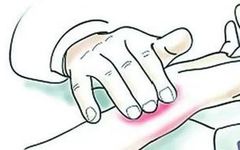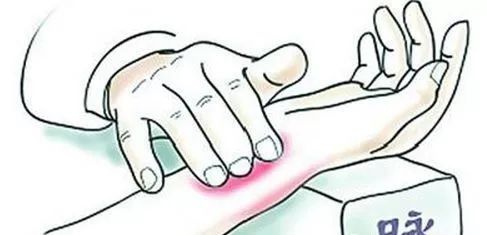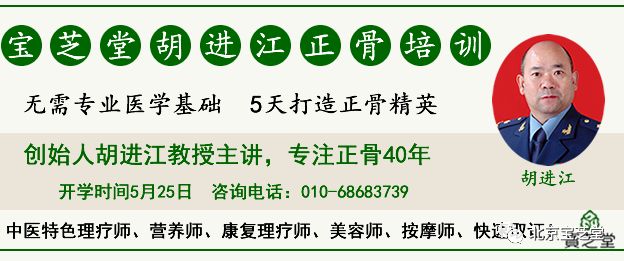The term pulse pattern (mài xiàng) is familiar to many, as it is a concept in Traditional Chinese Medicine (TCM). Through pulse diagnosis (bà mài), practitioners can initially assess a patient’s condition and subsequently provide targeted treatment.
There are 28 common pulse patterns in TCM. What are the specific characteristics of these pulse patterns? Let’s take a look.
Floating Pulse (fú mài): The pulse is light and floating; if pressed slightly, it feels weak.
Surging Pulse (hóng mài): The pulse appears broad and strong, but it is strong on the way in and weak on the way out.
Soft Pulse (rú mài): The pulse is light and weak, soft and fine.
Scattered Pulse (sàn mài): The pulse is scattered and floating, like floating duckweed, with uneven strength.
Empty Pulse (kāo mài): The pulse is light and broad but feels empty.
Leather Pulse (gé mài): The pulse is light and floating but has a striking strength when pressed, showing a hard edge on both sides with a hollow center, similar to a drum.
The above pulse patterns are all easily obtained with light pressure.
Deep Pulse (chén mài): The deep pulse is heavy; it is difficult to feel with light pressure and requires more force to detect the pulse at the wrist.
Hidden Pulse (fú mài): The hidden pulse is even harder to detect than the deep pulse; it requires pressing down to the bones to obtain the pulse pattern.
Weak Pulse (ruò mài): The pulse is thin and weak; it is difficult to detect without firm pressure.
Firm Pulse (láo mài): This pulse is heavy and solid, requiring firm pressure to feel; it is robust and broad, with a long rhythm.
The common feature of the above pulse patterns is that they require firm pressure to be felt.
Slow Pulse (chí mài): Slow means sluggish; the slow pulse is characterized by a rate of less than four beats per breath.
Relaxed Pulse (huǎn mài): The relaxed pulse is slightly faster than the slow pulse, with four beats per breath, but still slow and weak.
Rough Pulse (sè mài): Rough means difficult; the rough pulse is characterized by a sluggish and unsteady rhythm.
Knotted Pulse (jié mài): The pulse is slow and shows irregular stops, with an indeterminate number of stops.
The common feature of the above pulse patterns is that the pulse is few and slow, with irregularity.
Rapid Pulse (shù mài): The rapid pulse is characterized by more than five beats per breath but less than seven.
Fast Pulse (jí mài): Fast means quick; the fast pulse can reach seven to eight beats per breath.
Urgent Pulse (cù mài): The urgent pulse shows irregular stops on the basis of the rapid pulse.
Moving Pulse (dòng mài): This refers to a pulse that beats very short but with great strength.
The common feature of the above pulse patterns is that the pulse beats five or more times per breath.
Full Pulse (shí mài): In contrast to the empty pulse, the full pulse is characterized by fullness and strength.
Slippery Pulse (huá mài): Slippery means smooth; the pulse is clear and round.
String-like Pulse (xián mài): The pulse is straight and long, like pressing a guitar string.
Tight Pulse (jǐn mài): The pulse is tight and springy.
Long Pulse (cháng mài): In contrast to the short pulse, the long pulse is extended.
Large Pulse (dà mài): The pulse is wide and calm, without showing a surging force.
The common feature of the above pulse patterns is that they are strong under the fingers.
Pulse patterns are an important basis for diagnosis in TCM. The above is a brief introduction to the 28 common pulse patterns, which I hope will be helpful to you.
Empty Pulse (xū mài): Empty means floating; the pulse feels soft and weak under the fingers.
Fine Pulse (xì mài): The pulse is like a fine thread, clearly felt under the fingers.
Minute Pulse (wēi mài): This pulse is soft and may appear intermittently.
Intermittent Pulse (dài mài): Characterized by slow and regular pauses.
Short Pulse (duǎn mài): As the name suggests, this pulse is short at both ends.
The common feature of the above pulse patterns is that they are weak under the fingers.
Full Pulse (shí mài): In contrast to the empty pulse, the full pulse is characterized by fullness and strength.
Slippery Pulse (huá mài): Slippery means smooth; the pulse is clear and round.
String-like Pulse (xián mài): The pulse is straight and long, like pressing a guitar string.
Tight Pulse (jǐn mài): The pulse is tight and springy.
Long Pulse (cháng mài): In contrast to the short pulse, the long pulse is extended.
Large Pulse (dà mài): The pulse is wide and calm, without showing a surging force.
The common feature of the above pulse patterns is that they are strong under the fingers.
Pulse patterns are an important basis for diagnosis in TCM. The above is a brief introduction to the 28 common pulse patterns, which I hope will be helpful to you.




